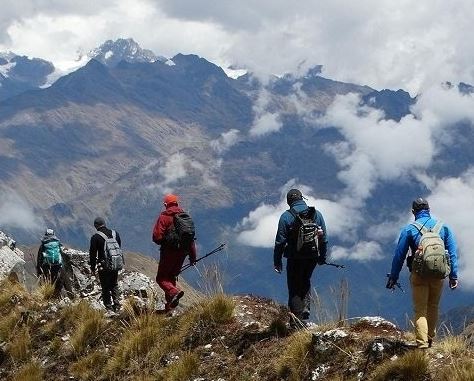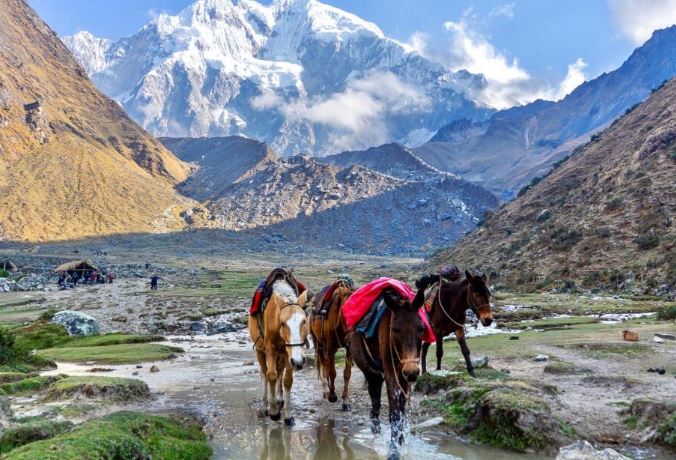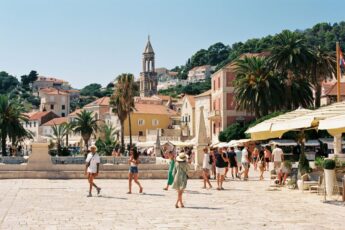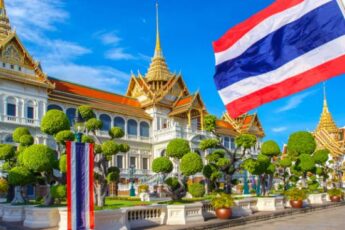When I embarked on the Salkantay Trek, I didn’t truly appreciate how special it was going to be. Like many adventurers drawn to Peru’s legendary Machu Picchu, I had initially set my sights on the more famous Inca Trail, eager to follow in the footsteps of ancient civilizations and marvel at the breathtaking ruins along the way. However, fate had a different path in store for me, and it led me to discover the hidden gem that is the Salkantay Trek. Little did I know that this alternative route would offer me an experience beyond my wildest expectations, revealing the true essence of the Peruvian Andes in all its rugged beauty and untamed allure.”
When it comes to trekking to Machu Picchu, the iconic ancient citadel nestled in the Peruvian Andes, the Inca Trail often steals the spotlight as the most famous route. However, hidden in the shadows lies the Salkantay Trek, an alternative route that offers its own set of unparalleled experiences and breathtaking landscapes. Here are the reasons why the Salkantay Trek reigns supreme over the Inca Trail for Machu Picchu adventurers:
- Scenic Diversity: While the Inca Trail primarily traverses high-altitude Andean landscapes, the Salkantay Trek offers a diverse range of scenery, from snow-capped peaks to lush cloud forests, turquoise lakes, and cascading waterfalls. Trekkers are treated to ever-changing panoramas that showcase the stunning natural beauty of the Peruvian Andes.
- Fewer Crowds: Unlike the heavily regulated Inca Trail, which limits the number of trekkers and requires permits booked months in advance, the Salkantay Trek sees fewer crowds, providing a more immersive and peaceful experience in nature. Trekkers can enjoy quieter trails and have a greater sense of solitude amidst the rugged wilderness.
- Cost Considerations: One of the significant differences between the Salkantay Trek and the Inca Trail is the cost associated with permits. The permits for the Inca Trail are typically much higher compared to those for the Salkantay Trek due to the popularity and limited availability of spots on the Inca Trail. This difference in cost can be a deciding factor for budget-conscious travellers who are looking for an equally rewarding trekking experience without breaking the bank.
- Challenging Terrain: While both treks offer their own challenges, the Salkantay Trek is known for its rugged and demanding terrain, making it a thrilling adventure for experienced hikers seeking a more strenuous trek. Trekkers must navigate steep ascents, rocky paths, and high-altitude passes, adding an element of excitement and achievement to the journey.

- Flexibility in Booking: Securing permits for the Inca Trail can be a logistical challenge, requiring advanced booking months in advance due to the strict regulations and limited availability. On the other hand, the Salkantay Trek offers more flexibility in booking, allowing trekkers to arrange their trip with shorter notice and greater convenience. This flexibility makes it easier for travellers to plan their Machu Picchu adventure without the hassle of long waiting periods or uncertainty.
- Spectacular Views: One of the highlights of the Salkantay Trek is the opportunity to witness breathtaking views of the towering Salkantay Mountain, the highest peak in the Vilcabamba mountain range. Trekkers are rewarded with awe-inspiring vistas of snow-capped peaks, deep valleys, and dramatic landscapes that rival any postcard-worthy scene.
- Cultural Encounters: Along the Salkantay Trek, trekkers have the opportunity to interact with local communities and learn about traditional Andean culture and way of life. From visiting remote villages to meeting indigenous Quechua-speaking communities, the trek provides a deeper understanding of the region’s rich cultural heritage.
- Flexibility and Accessibility: Unlike the tightly regulated Inca Trail, the Salkantay Trek offers more flexibility in terms of itinerary options and departure dates, allowing trekkers to choose a route and schedule that best suits their preferences and availability. Additionally, the Salkantay Trek is accessible year-round, providing more opportunities for adventure-seekers to embark on their Machu Picchu journey.
- Hot Springs and Wildlife: Along the Salkantay Trek, trekkers can indulge in well-deserved relaxation at natural hot springs nestled amidst the mountains, providing a rejuvenating respite after a day of hiking. Additionally, the region is home to a diverse array of wildlife, including Andean condors, llamas, and spectacled bears, offering opportunities for wildlife spotting and photography.
- Less Environmental Impact: With fewer trekkers and a less regulated route, the Salkantay Trek has a lower environmental impact compared to the Inca Trail. Trekkers can enjoy a more sustainable and eco-friendly experience while minimising their footprint on the fragile Andean ecosystem.

In conclusion, while the Inca Trail may be the more famous and iconic route to Machu Picchu, the Salkantay Trek offers a compelling alternative that rivals its counterpart in terms of natural beauty, cultural immersion, and adventure. From its diverse landscapes and cultural encounters to its lower cost and greater flexibility, the Salkantay Trek emerges as a superior choice for travellers seeking an unforgettable journey to the ancient wonders of Machu Picchu.







Leave a Comment